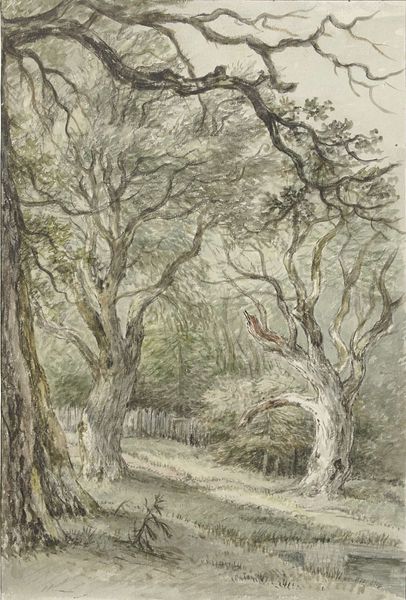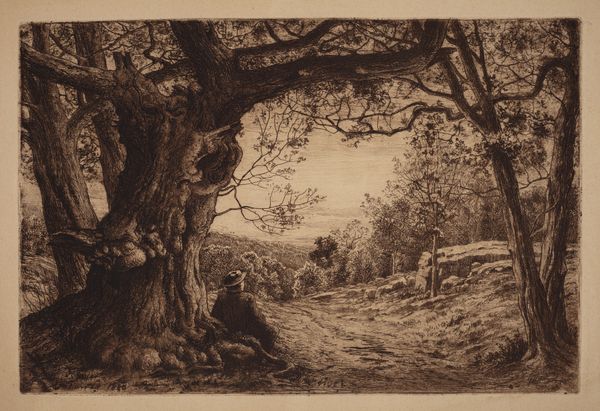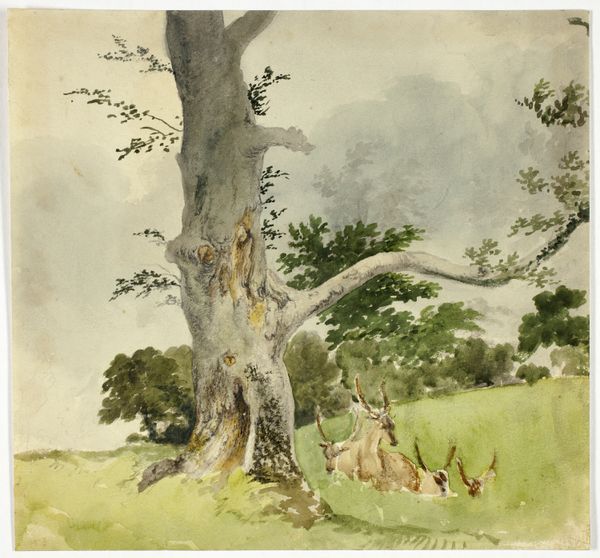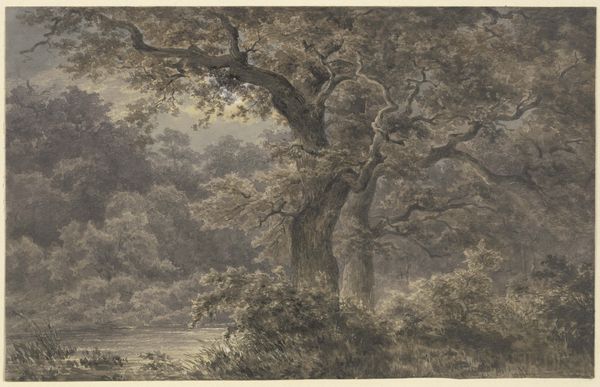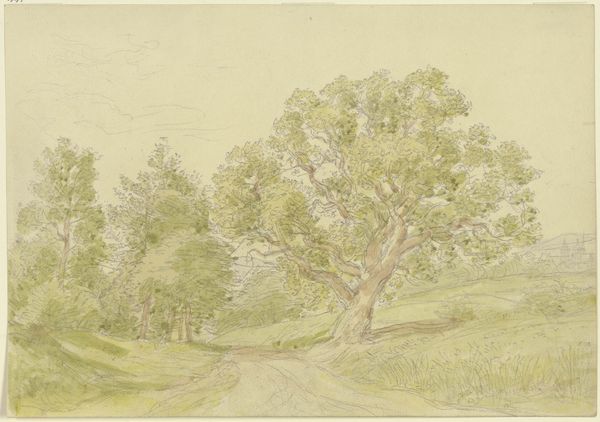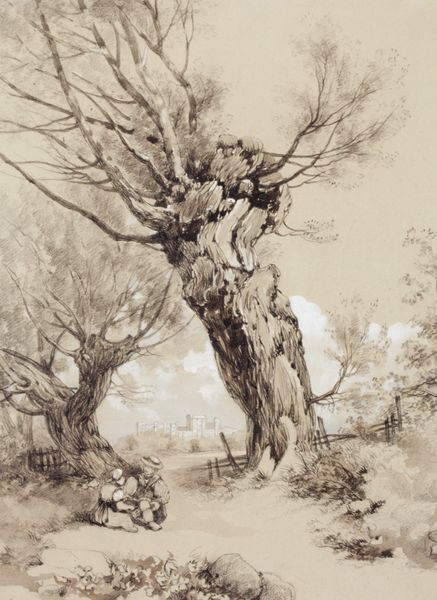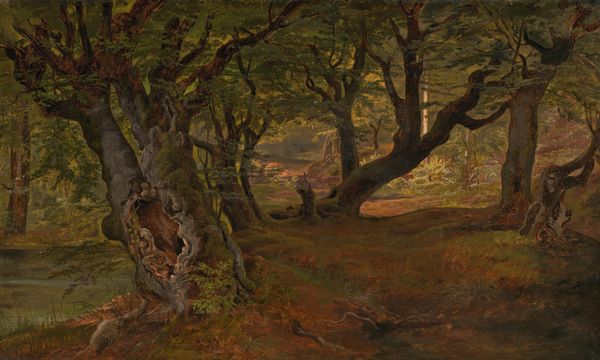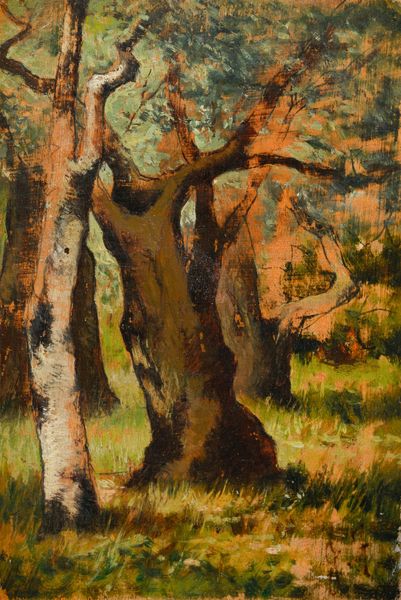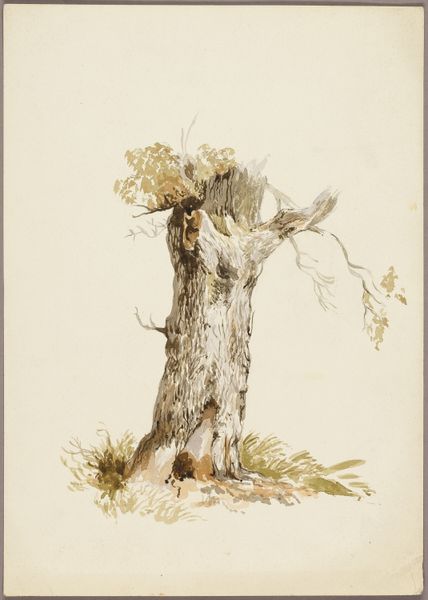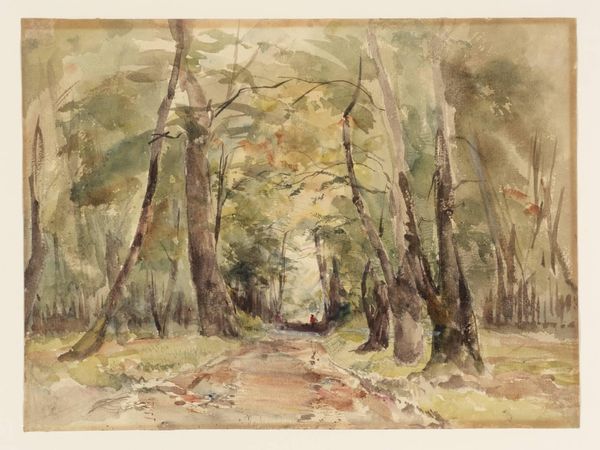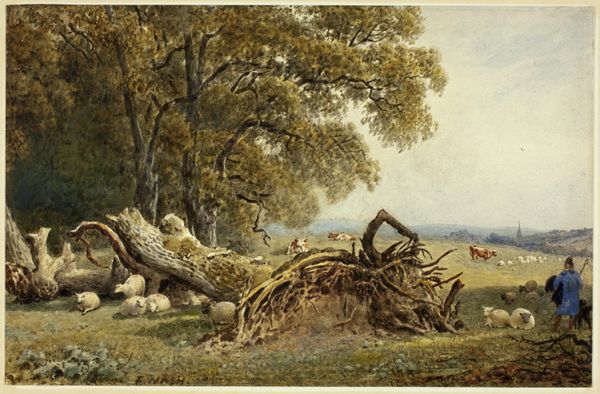
drawing, painting, print, paper, watercolor, graphite
#
drawing
#
fairy-painting
#
painting
# print
#
landscape
#
paper
#
watercolor
#
coloured pencil
#
romanticism
#
graphite
#
watercolor
#
realism
Dimensions: 200 mm × 260 mm
Copyright: Public Domain
Elizabeth Murray created this watercolour painting, Rotting Tree, in Britain during the mid-19th century. It depicts a hollowed-out tree trunk in a woodland setting. Murray was part of a generation of female artists who found professional opportunities in watercolour painting, a genre considered suitable for women because of its association with domesticity and amateur pastimes. Watercolours were also cheaper to produce and collect than oil paintings. Yet Murray exhibited widely and travelled extensively, demonstrating a professional ambition that challenged Victorian gender norms. The image itself reflects wider cultural attitudes toward nature. The Romantics had elevated the natural world as a source of spiritual inspiration, but by the mid-19th century, industrialisation and urban growth were transforming the British landscape. This painting may be interpreted as an elegy for a disappearing natural world, a sentiment echoed in the writings of John Ruskin and other contemporary critics. Art historians use a range of primary sources, including exhibition reviews, letters, and diaries, to reconstruct the social and institutional contexts in which art was made and viewed. The meaning of art is never fixed, but always emerges from its historical moment.
Comments
No comments
Be the first to comment and join the conversation on the ultimate creative platform.
